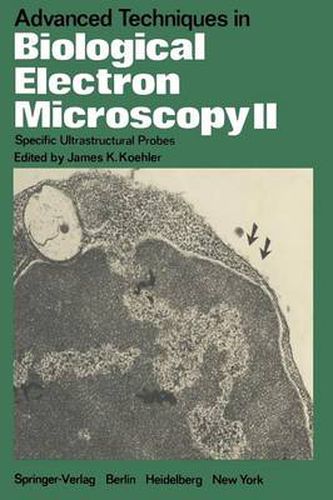Readings Newsletter
Become a Readings Member to make your shopping experience even easier.
Sign in or sign up for free!
You’re not far away from qualifying for FREE standard shipping within Australia
You’ve qualified for FREE standard shipping within Australia
The cart is loading…






This title is printed to order. This book may have been self-published. If so, we cannot guarantee the quality of the content. In the main most books will have gone through the editing process however some may not. We therefore suggest that you be aware of this before ordering this book. If in doubt check either the author or publisher’s details as we are unable to accept any returns unless they are faulty. Please contact us if you have any questions.
The use of the term advanced in the title of this book is somewhat ar bitrary and very much relative with respect to time. Many techniques which were considered at the cutting edge of ultrastructural methodology just a few years ago are now rou tin ely used in numerous laboratories. One could cite freeze-fracture, cryothin sectioning, or indeed most of the field of scan ning electron microscopy as concrete examples. Thus the use of the term ad vanced techniques must be interpreted with regard to the present state of the art, and is useful only in informing the potential reader that this volume is not a primer to be used as an initial introduction into basic biological elec tron microscopy. Many excellent volumes have filled that niche in the past few years, and it is not intended that this modest book be a complete com pendium of the field. Furthermore, any limited selection of papers on advanc ed techniques necessarily reflects the preferences and arbitrary whims of the editor, thereby excluding many equally important procedures which the knowledgeable reader will readily identify. The first volume of this series appeared approximately five years ago and illustrated techniques which were thought to represent advanced and yet ba sically morphological methods for gaining increased ultrastructural informa tion from biological specimens. The present volume, on the other hand, stresses techniques which provide specific physicochemical data on the speci mens in addition to the structural information.
$9.00 standard shipping within Australia
FREE standard shipping within Australia for orders over $100.00
Express & International shipping calculated at checkout
This title is printed to order. This book may have been self-published. If so, we cannot guarantee the quality of the content. In the main most books will have gone through the editing process however some may not. We therefore suggest that you be aware of this before ordering this book. If in doubt check either the author or publisher’s details as we are unable to accept any returns unless they are faulty. Please contact us if you have any questions.
The use of the term advanced in the title of this book is somewhat ar bitrary and very much relative with respect to time. Many techniques which were considered at the cutting edge of ultrastructural methodology just a few years ago are now rou tin ely used in numerous laboratories. One could cite freeze-fracture, cryothin sectioning, or indeed most of the field of scan ning electron microscopy as concrete examples. Thus the use of the term ad vanced techniques must be interpreted with regard to the present state of the art, and is useful only in informing the potential reader that this volume is not a primer to be used as an initial introduction into basic biological elec tron microscopy. Many excellent volumes have filled that niche in the past few years, and it is not intended that this modest book be a complete com pendium of the field. Furthermore, any limited selection of papers on advanc ed techniques necessarily reflects the preferences and arbitrary whims of the editor, thereby excluding many equally important procedures which the knowledgeable reader will readily identify. The first volume of this series appeared approximately five years ago and illustrated techniques which were thought to represent advanced and yet ba sically morphological methods for gaining increased ultrastructural informa tion from biological specimens. The present volume, on the other hand, stresses techniques which provide specific physicochemical data on the speci mens in addition to the structural information.